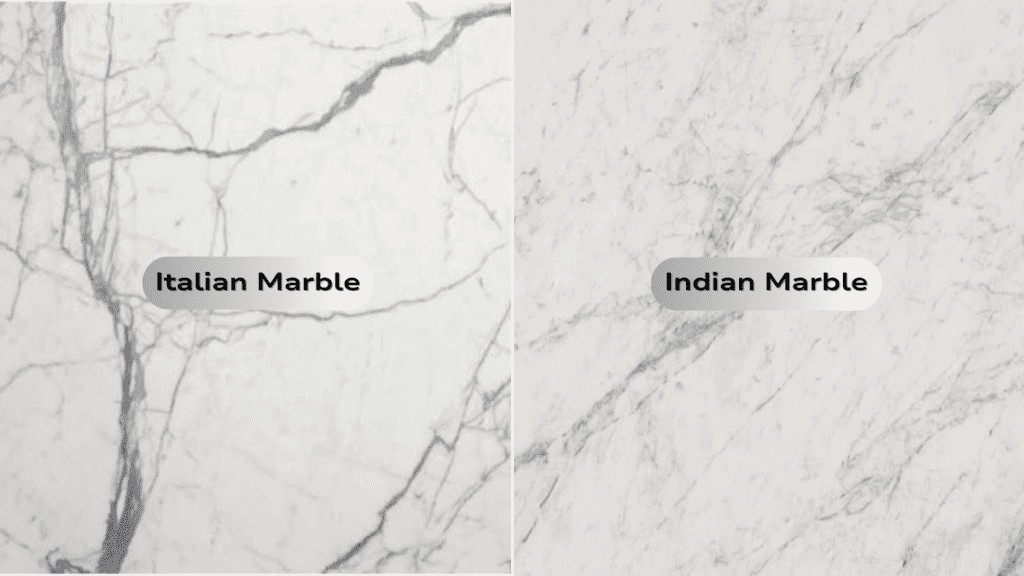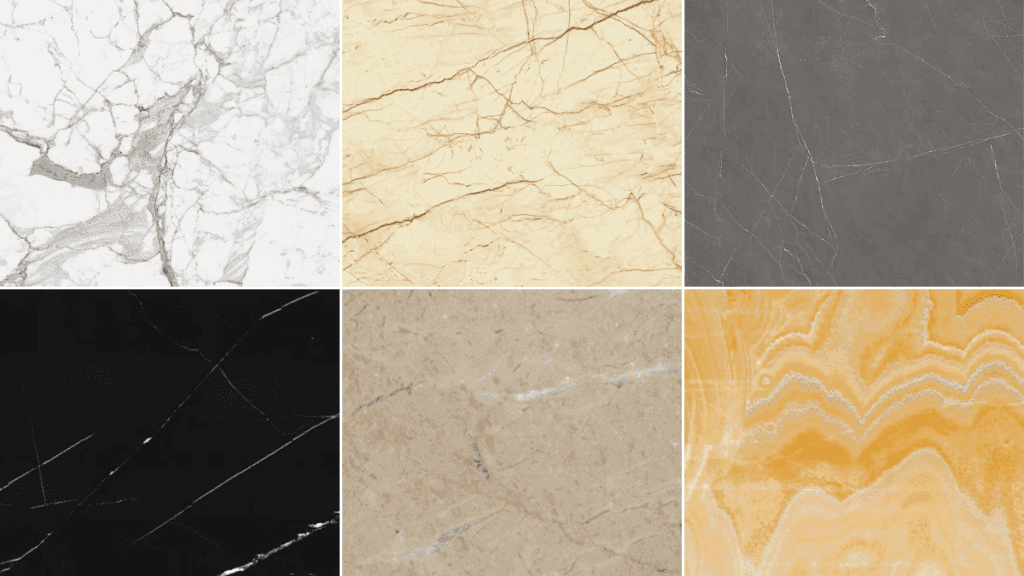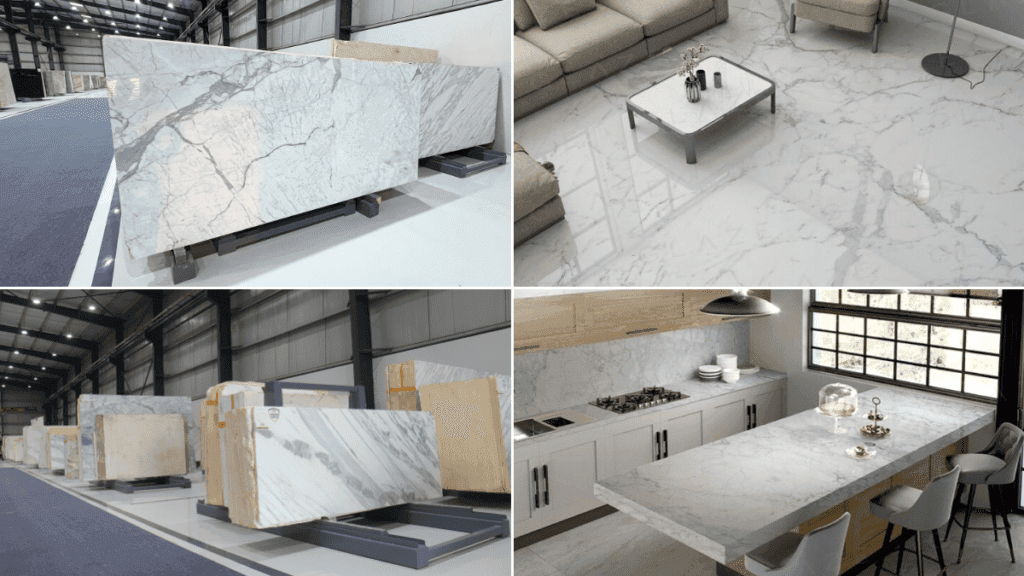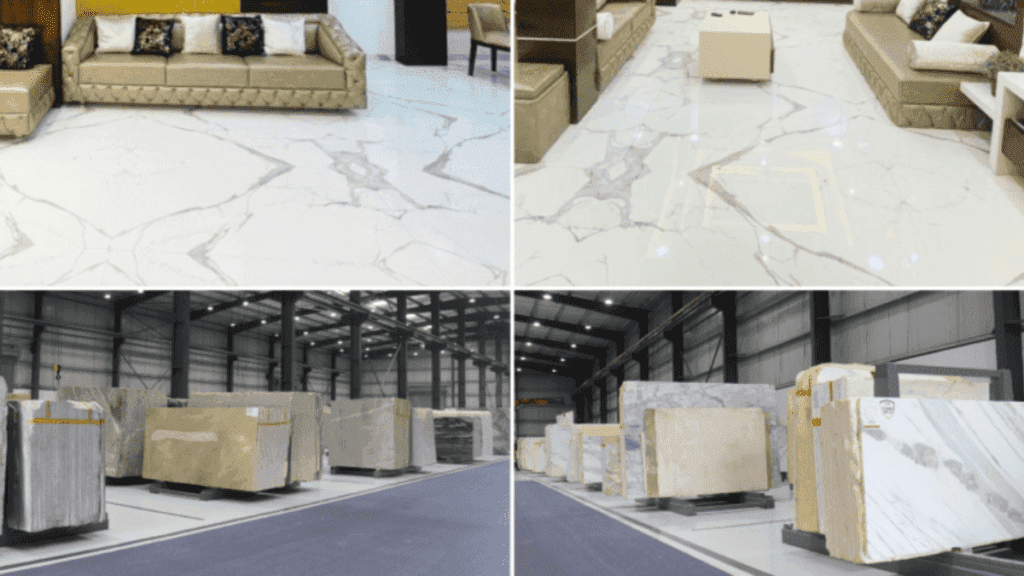When choosing marble for your home or commercial project, the decision between Italian marble and Indian marble can be daunting.
Each type has its own unique characteristics, advantages, and aesthetic appeal. This guide will help you understand the differences between Italian and Indian marble, so you can make an informed choice that suits your taste and budget.
Where Do Italian and Indian Marbles Come From?
Italian Marble: Italian marble is quarried directly from Italy, a nation famous for its production of several of the most luxurious and in-demand marbles in the world. Among these are famous varieties such as Carrara, Calacatta, and Statuario, which are more well-known for their lovely white tones and beautiful veining patterns.
Indian Marble: In this country, Indian marble is mined primarily in the state of Rajasthan. Well-known types of Indian marble include Makrana, Ambaji, and Rajnagar Marble. Due to its very rich geology, it comes in different colors and textures, which makes it versatile for various design aesthetics.
How Do Italian and Indian Marbles Look?

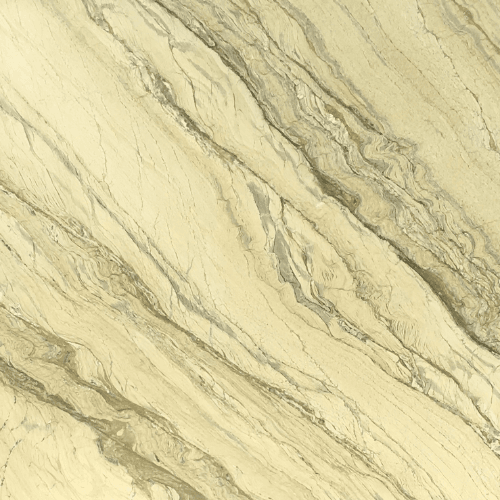
Italian Marble: Italian marble is said to evoke a high-end, luxurious appearance. Most of it will typically have a bright white background with thin veins of gray, gold, or black. The sophisticated and timeless look like this makes Italian marble perfect for any space that suggests sophistication and refinement.
Indian Marble: Indian marble offers an even more extensive color palette, from pristine whites through deep greens, reds, and browns. Veining is also much varied and pronounced in Indian marbles, which provides additional depth of character to any room.
Whether you are looking to complement traditional or contemporary design, the choices in Indian marble will provide enough of a selection to bring your vision into being.
Which Marble Is Easier to Care For?
Italian Marble: Though Italian marble is prized for its beauty, it’s also a bit softer and more porous than its Indian counterpart. This means it might need more frequent sealing and gentle maintenance to avoid staining and scratching—especially in high-traffic areas like kitchens and bathrooms.
Indian Marble: Since it’s harder and of less porosity, Indian marble bears wear and tear better. It requires less maintenance to be needed, so it’s practical both for a busy home and a commercial space. It’s strong, so it looks great even with little maintenance, year in and year out.
How Do Italian and Indian Marbles Compare in Price?
Italian Marble: After that, Italian marble is usually more expensive, reflecting its premium quality and the costs associated with importing it to India. This is controlled by factors such as the rarity of the marble, aesthetic qualities, and complexities associated with the extraction and processing of the same.
Indian Marble: Indian marble is more affordable when compared with others, quite within reach of the many. It is locally available, and the expenses involved are less; this makes it less expensive, all without giving up an inch on either its beauty or quality. This makes Indian marble very desirable to those who like to combine luxury in interiors with affordability.
Where Should You Use Italian or Indian Marble?


Italian Marble: Italian marble is used in many prestigious interiors and seems to be a favorite for luxury spaces. High-impact visual areas such as living rooms, hallways, and feature walls have this marble applied extensively. In addition, Italian marble is in high demand for countertops and bathroom vanity tops within the luxury residential and commercial markets.
Indian Marble: Due to its durability and color range, Indian marble is appropriate for use in flooring, staircases, and external cladding. It can be used both in residential spaces and big commercial projects, giving flexibility to your design while providing the added advantages of longevity and low maintenance.
How Sustainable Are Italian and Indian Marbles?
Italian Marble: Italian marble has higher environmental impacts since the chain from extraction to processing to transport is long, thereby involving several energy-intensive processes. If you’re someone who really cares about sustainability, this might be a defining criterion for you while choosing your marble.
Indian Marble: Indian marble has a lower carbon footprint due to its availability in the country. This reduces the emission of gases for transportation because it is locally available and will require lesser emissions compared to other international materials located far from most Indian projects. Hence, Indian marble is able to perform the dual task of boosting local industries while playing its part in minimizing the harm to the atmosphere.
Conclusion: Making the Right Choice for Your Space
The choice between Italian marble and Indian marble will have to be based on personal preference, budget, and of course, the needs of your project.
If you like timeless luxury and do not care about investing in premium quality, then Italian marble could be the right one for you.
On the other hand, if you want durability, a wider color range, and more pocket-friendly pricing, then Indian marble represents real value.
RMS Stonex Kishangarh has an enormous collection of Italian and Indian marbles, promising you to find just the right stone for your design idea.
Our team is knowledgeable to help you pick the right marble that works well for your aesthetic, function, and budget.

